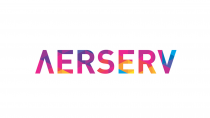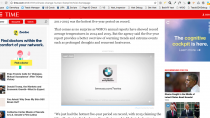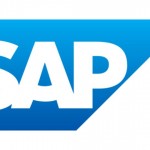ビデオRTBの成功には、売り側・買い側のイーブンな立場が必要
Digital video, like mobile, remains something of a paradox: the growth continues to be absolutely phenomenal — eMarketer says it will grow 46 percent to $2.9 billion this year, with an additional 41 percent gain to $4.1 billion next year — but no one company in the space is viewed as really “crushing” everyone else.
The big trend in the space these days is to be a one-stop shop for publishers, advertisers and other ad tech firms looking to tap video’s growth. (As an example, read about ad platform Videology’s recent acquisitions of LucidMedia and Collider, which are designed to give it a foothold with the sell side and the buy side.) While OneScreen hasn’t been active in the M&A space, it has been striking partnerships lately that are intended to give it a certain “ecumenical” appeal to all players in the digital video space. We spoke with CEO Atul Patel about the challenges of trying to be “all things to all ad players.”
AdExchanger: What is OneScreen’s primary ad product these days? How is the company positioning itself?
ATUL PATEL: We are continuing our mission, which is to provide audiences more ways to watch content where, when, and how they want. We do this by partnering with three key stakeholders in the industry: producers, publishers, and advertisers. OneScreen also supports the aggregators, networks, and agencies that represent these stakeholders. We like to think of ourselves as a “B2B2C” company, with our partners serving as the bridge to the audience.
The only way we can serve as a catalyst for pushing the digital video industry forward is to provide advertising capabilities that help publishers and producers generate revenue. We also need to serve as a means for advertisers, agencies, advertising networks, and exchanges to easily buy video advertising. This entails offering buy- and sell-side capabilities, as well as server and client-side advertising tools and integrations.
For OneScreen, the most-used capabilities are advertising technologies for publishing partners – sell-side and ad serving.
Partners who have accounts that serve ads on their publishing properties can access tools for trafficking, managing, and optimizing ad campaigns; it doesn’t matter if they sell to advertisers or agencies, work with ad networks, or use OneScreen for back-fill. Through native capabilities and third-party integrations, we help publishers make video a meaningful business.
One aspect I want to emphasize is that OneScreen has a very open view of the digital video ecosystem. You will continue to see us building deep integrations with third parties, from ad servers like DoubleClick to rich media tools from Innovid, all while still investing in building in-house tools and services.
What is driving growth in video RTB these days? Is it general agency trading desk activity coupled with the rise of RTB platforms in general?
RTB needs both buy and sell-sides to be a successful system. We do see RTB in video, but it is still early for everyone from ad exchanges, all the way to agency trading desks. What we see more of now are publisher-side optimization tools that can maximize fill, but not necessarily maximize price. Early on in display RTB, campaign pricing was generally fixed from impression to impression, with publishers able to maximize their yield using supply-side platforms.
We believe that the industry is at a similar stage with video, where publishers are utilizing tools for yield. To effectively participate in RTB, advertisers need more logistical tools for buying video advertising, such as the encoding of video files and targeting for specific audiences and environments.
Since you’re positioned on both sides of the ad sales equation, how do you perceive the approach to video RTB by publishers and buyers and the marketers they represent?
As with display, a disconnect still exists between the buy-side and sell-side. I’ve actually spoken with a demand-side video platform about a serious integration need relating to data and tracking, and their response was “it’s a publisher problem.”
This is why Google’s move to add Invite Media and Admeld into its advertising platform is so smart; stakeholders need to solve both ends to really get this right. OneScreen is following a similar path to Google, serving as a catalyst for real-time bidding and video advertising as a whole.
There’s a lot of focus on bringing the seemingly competing notions of guaranteed premium ad sales together with the efficiency of RTB formats, which tend to be dominated by cheaper direct response campaigns. Is that an accurate view of the landscape and do you see things tilting in any one direction?
The competing notions of guaranteed premium ad sales and RTB are overcome with concepts such as the “private exchange,” which allows companies to equally maximize revenue when they can sell direct and also when they cannot. For instance, Dow Jones launched a private exchange with Rubicon Project to route remnant inventory through the RTB channel. Because RTB is still relatively nascent in video, as I stated earlier, I believe private exchanges will have a home in video similar to display.
OneScreen already enables networks that have pooled together many publishers into a “private network” so they can work with their own advertising sales, as well as third-party ad networks and exchanges. There is a natural step for networks to streamline this relationship by creating private exchanges for their ad inventory. The demand for that inventory will mostly come from their existing ad network and exchange relationships and those provided by OneScreen.
As for advertisers and agencies – both in branding and direct response – we are starting to figure out how to enable them to connect directly into the ecosystem of video and augment how they currently buy from the traditional ad networks with additional options. By enabling advertisers and agencies to connect directly with publishers and producers, OneScreen is building efficiencies around price and process and introducing more control and transparency. This will add to the liquidity needed to make RTB and private exchanges successful.
Do you have any major plans for video ad sales in the mobile space? If so, what are the hurdles you’re attempting to surmount?
While our platform supports mobile environments, with HTML5 players for mobile browsers and apps for platforms, mobile in general is not currently a significant revenue driver for us only because mobile viewership is skewed toward the bigger properties – Hulu, YouTube, ESPN, and Netflix.
However, we see mobile playing a big role in our mission to give audiences more access to watch content. An unspoken aspect of mobile is its ambiguity, and this is where OneScreen sees the most potential. In today’s market, almost every device is mobile, such as a phone and tablet, or has attributes of being mobile, such as a laptop or smart television. It is in this convergence that we see opportunity. Regardless of the screen size, format, platform, OneScreen is working hard to pave a way for producers to monetize their content, and for small and new publishers to participate in video democratization. All this, of course, introduces significant opportunity for advertisers to access this new “mobile” inventory.
What’s your sense of the challenges that come from this kind of “democratization?”
Of course, this convergence comes with its difficulties, from video files being properly encoded for cross-platform use to standards that overlap (e.g., VPAID and MRAID). What we are doing is consolidating all aspects of video into a single platform — vertically across all things video and horizontally for all platforms.
The applications that we build for large media companies, including browser-based video players, Kindle devices, iOS devices, Boxee and Roku, smart televisions, such as Samsung, etc., all use the same system for content management, publishing, and ad serving. The way we’ve seen it since day one is that these are all just different screens, and they don’t need new systems for each. Our platform reflects the convergence that is occurring and makes video profitable by breaking down the normal barriers that come from dealing with so many different systems.
Brand safety and verification is another hot topic these days. Does OneScreen offer anything in that area?
OneScreen’s partner base covers a broad spectrum of companies, from large media conglomerates to small blogs. One thing that our partners have in common is that advertising serves as the largest share of revenue. As such, it is important that we provide options for brand safety, verification, contextualization, and more.
Given that OneScreen provides the content, the player, and serves the ads, we can use a closed loop to offer the type of protection companies require. We have integrated services for brand safety and content scoring and combine these with in-house tools of our own. Using this combination, we can study a domain or page URL to identify the language, age appropriateness, content category, bad language keywords, and other objects on a page. The architecture of our platform makes it easy to bring more of these capabilities into our core system and continue to integrate third-party verifiers for the benefit of our advertising partners, which include ad networks, advertisers, and agencies.











